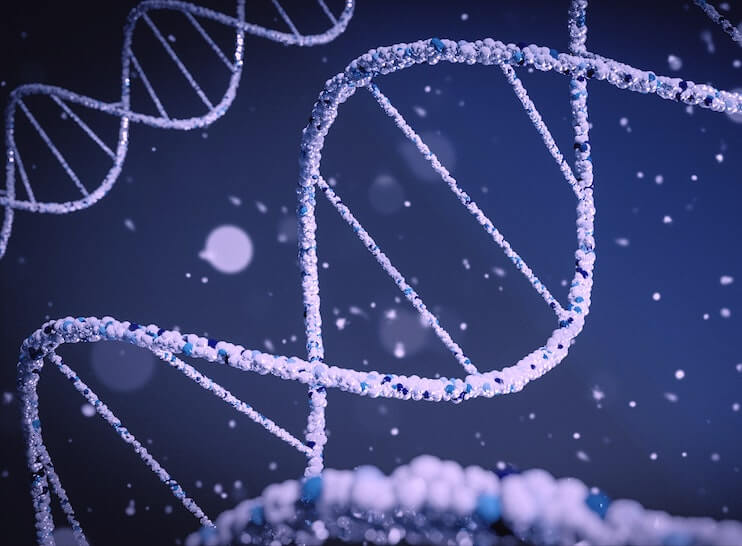Gluten is a protein in some foods, including wheat, wheat products, rye, barley, and most cereals. Most baked foods are made with wheat because gluten protein puffs up the dough and gives elasticity. However, some people can't digest gluten well, which causes health problems when they ingest gluten-containing foods. Gluten's indigestibility may arise from several diseases, including celiac disease, non-celiac gluten sensitivity, wheat allergy, and gluten ataxia. In this article, you'll learn about the types of gluten-related disorders, their symptoms, diagnosis, and treatment.
What Are Gluten-Related Disorders?
Gluten-related disorders are:¹
- Celiac Disease: Celiac disease is characterized by degeneration of intestinal cells caused by the body's immune system not recognizing gluten. It's an autoimmune disease with no cure. Luckily, the symptoms disappear after the adoption of a gluten-free diet.²
- Non-celiac Gluten Sensitivity: Non-celiac gluten sensitivity is diagnosed when a patient doesn't have celiac disease or other gluten-related problems despite having the symptoms caused by gluten exposure. It's the most common type of gluten-related disorder, with a prevalence of 0.5% to 13%.¹
- Wheat or Grain Allergy: People with wheat allergy show adverse reactions when wheat proteins are ingested. The symptoms can vary from itching to anaphylaxis, which is life-threatening. Wheat allergy can be diagnosed by oral food challenges, and treatment is the complete avoidance of wheat.
- Gluten Ataxia: Gluten ataxia is a neurological problem characterized by cerebellum damage. Gluten antibodies are hypothesized to cause neuropathy (nerve damage) in the cerebellum, a part of the brain involved in muscle control, movement, and balance.
- Dermatitis Herpetiformis: Dermatitis herpetiformis is a skin disease caused by gluten sensitivity. It can cause chronic and relapsing skin lesions on body parts, including the scalp, forearm, and knees.³
Symptoms to Look Out For

Gastrointestinal symptoms can be caused by either gluten-related diseases or other diseases unrelated to gluten ingestion. It's hard to identify the type of gluten-related disease just by looking at symptoms since they overlap.
Celiac Disease Symptoms
Symptoms of celiac disease include, but are not limited to:
- Diarrhea: Gluten causes intestinal damage, possibly corrupting the absorption of nutrients. Non Absorbed nutrients can attract water to the intestinal lumen, causing diarrhea.
- Constipation: Constipation is a common symptom of celiac disease. Constipation may be caused by changes in bowel motility because of inflammation and diet.
- Fatigue: Celiac disease may cause nutrient deficiencies, including but not limited to B12, folic acid, iron, zinc, and magnesium, which can cause tiredness and fatigue.⁴
- Anxiety and Depression: Celiac disease has been associated with problems in mental health, such as anxiety, depression, mood disorders, and schizophrenia.⁵ Mental health problems are not rare; depression prevalence has been reported to be 6% to almost 60% among patients with celiac disease.⁶
Gluten Intolerance Symptoms (NCGS)
Symptoms of gluten intolerance include, but are not limited to:
- Bloating: This and abdominal pain are commonly reported by patients, especially women with gluten intolerance. A study of 486 patients showed that more than 80% of NCGS patients struggle with bloating and abdominal pain.⁷
- Fatigue: Similar to celiac disease, patients with NCGS can experience fatigue, which is hypothesized to be caused by anemia and other nutrient deficiencies.
- Migraine: Is a severe headache that may be combined with photophobia, nausea, and vomiting. Some people reported to have migraine attacks when they consumed gluten. A study reported as high as 80% prevalence of migraine in women with celiac disease. Although the exact reason is not known, inflammatory responses to gluten are associated with migraine attacks.⁸
- Brain fog: A patient with brain fog feels like their neurocognitive functions are not as sharp as they usually are. These patients may experience difficulty thinking, concentrating, remembering, learning, etc.⁹
Wheat Allergy Symptoms
Wheat allergy can cause symptoms including but not limited to:
- Skin rash: The rash is a common symptom of allergic reactions. While some people have rash, others develop hives, contact dermatitis, and eczema.
- Sneezing: Wheat allergy can trigger mucus production, resulting in a runny nose, sneezing, watery eyes, etc.
- Headaches: Allergen exposure, in this case wheat, can cause headaches. Also, epinephrine injections used to treat allergies can cause headaches as a side effect, too.
- Asthma: It is generally seen as a severe case of allergies. It goes hand in hand with coughing, difficulty breathing, wheezing, and chest tightness.
<p class="pro-tip"><strong>Also Read: </strong><a href="gluten-free-diet">Gluten-Free Diet: Is It for You? Benefits & Foods to Try</a>.</p>
How to Diagnose Gluten Intolerance

No biomarkers are available for detecting glucose intolerance, also known as non-celiac gluten sensitivity. Diagnosis of gluten intolerance is made by excluding other gluten-related diseases. Therefore, it is diagnosed when a patient doesn't have celiac disease or a wheat allergy, yet experiences increased gastrointestinal symptoms after eating gluten.
The diagnosis consists of the adoption of a gluten-free diet and the reintroduction of gluten. In both steps, responses to intervention are assessed by a healthcare professional.10
- A Blood Test for Celiac Disease:
Before testing for glucose intolerance, patients should be screened for celiac disease. Diagnosis of celiac disease involves blood tests and endoscopy. Tests should be performed when patients are on a gluten-rich diet.
A biomarker IgA anti-tissue transglutaminase (TTG) is the most chosen serological biomarker for adults. In case of IgA deficiency, which is common in people with celiac disease, IgG-deamidated gliadin peptides (DPGs) are tested.
A biopsy of the small intestine is required if serology tests turn out positive or if there is a high probability of celiac disease even if the serology tests are negative. The diagnosis is made when the results of biopsy and serological tests are compatible.
- Continue Consuming Gluten for Six Weeks During the Testing:
Patients should eat a gluten-containing diet for 6 six weeks before the test. Baseline symptoms of the patient are assessed by a version of the Gastrointestinal Symptom Rating Scale (GSRS), an assessment tool (questionnaire) created to evaluate gastrointestinal symptoms.
Baseline assessments are performed 1 and 2 weeks before and on the first day of the gluten-free diet.
- Exclude Gluten From Your Diet as Your Doctor Recommends:
A dietitian ensures that the patients understand the requirements of a gluten-free diet.
Patients follow a verified gluten-free diet for six weeks at minimum. An extended gluten-free diet may be needed to establish the relationship between specific symptoms and gluten.
- Keep a Personal Record of Any Changes to Your Symptoms:
Every week, the questionnaire is performed, and the results are assessed by a healthcare provider. If a patient doesn't show the expected improvement after six weeks of a gluten-free diet, other diseases (such as inflammatory bowel diseases) possibly causing gastrointestinal symptoms should be evaluated.
If the symptoms improve, the test will continue with step 2, which involves reintroducing gluten.
- Reintroduce Gluten to Your Diet Gradually, and Take Notes of the Changes:
In the second step, gluten is reintroduced, and symptoms are evaluated during the intervention.
This step takes three weeks, with two weeks of intervention and one-week washout periods between them. Intervention periods consist of 2 weeks of gluten-free diet and capsules (either placebo or gluten, whose amount is determined beforehand). Therefore, either the first or last week randomly consists of a containing diet so the patients would be blinded to eliminate placebo effects.
- If Your Symptoms Return, It Means You Are Gluten Intolerant:
During two week-intervention, patients are evaluated regarding symptoms. To confirm the diagnosis of gluten intolerance, patients should demonstrate at least 30% improvement between placebo and gluten week, considering three main symptoms. If the results are negative, other diseases are evaluated to find the cause of gastrointestinal symptoms.
How to Treat Gluten Intolerance
There is no cure for gluten intolerance; luckily, symptoms disappear following a gluten-free diet. Nutritional deficiencies are present due to gluten's disruptive effects on the digestive system. Therefore, supplementing deficient nutrients is generally part of the treatment, too.
In severe cases, patients can also be given immunosuppressive medications, including prednisone, azathioprine, 6-mercaptopurine, and mycophenolate.¹
- Ask Your Healthcare Provider About a Gluten-Free Diet: If you're diagnosed with gluten intolerance, you would be prescribed a gluten-free diet. Ask your doctor and dietitian questions until you can navigate a gluten-free diet.
A dietitian can also provide gluten-free recipes and nutrition plans to ease your way into a gluten-free diet.
- Ask Your Healthcare Provider About Probiotics: Although some research highlights probiotics may improve gastrointestinal symptoms, there is not enough evidence to support the benefits of probiotics in gluten-related disorders.¹¹
Remember that some over-the-counter probiotics may contain gluten; always check the product labels.¹² Although the manufacturer says the product is gluten-free, you can only be sure if it has been tested by third-party laboratories.
In the past, there would be incidences of products exceeding FDA-gluten labeling standards even if they indicated gluten-free on the label.¹³ Some probiotic products have The Crossed Grain Trademark, a symbol indicating a product tested for gluten and is gluten-free.¹²
If you want to try probiotics, consult your doctor to choose the best products regarding quality, dosage, strains, colony-forming unit (CFU), gluten-testing, usage, etc.
- Ask Your Healthcare Provider About Enzymes: Gluten contains specific protein sequences resistant to gastrointestinal enzymes responsible for breaking down proteins. When gastrointestinal enzymes can't break down gluten completely, highly immunogenic protein sequences pass through the intestinal barrier, resulting in inflammation.
Gluten-degrading enzymes are identified in some plants, bacteria, and fungi. Prolyl endopeptidases (PEP) and Glutamine-Specific Cysteine Endoprotease (EP-B2) are two of those enzymes. Some probiotics also contain gluten-degrading enzymes. However, there is little evidence considering their efficacy. 14
Learn About Gluten-Free Diets With Signos' Expert Advice
Self-diagnosis of gluten-related disorders can be harmful. If you’re experiencing gastrointestinal and other symptoms after eating a gluten-rich meal, do not just assume you have gluten-related diseases. The probability of gluten-related diseases should be assessed with proper tests by a qualified healthcare provider.
Signos provides a glucose monitoring system that can improve your health by providing personalized nutrition and exercise based on your glucose data. You can also chat with nutritionists within the Signos app and get personalized feedback on your nutrition.
If you’re wondering if Signos fits you, take a quick quiz to find out.
<p class="pro-tip"><strong>Learn More:</strong><a href="gluten-free-candy">Best Gluten-Free Candy Options: A Complete Guide</a>.</p>
- Item 1
- Item 2
- item 3









.jpg)






















